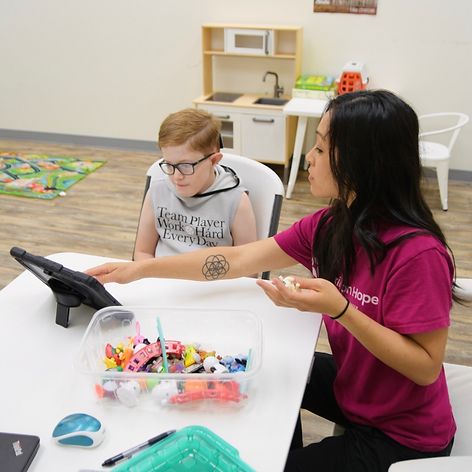Phone: (918) 984-9153 | Fax: (918) 289-0579 | 4908 S. Sheridan, Tulsa, OK 74145
Speech Therapy
What is Speech Therapy?
The purpose of speech therapy is to establish a reliable means of communication for a child so they may be able to communicate their wants and/or needs reliably/effectively to those around them, across all environments.


Common Areas Addressed
in Speech Therapy:
-
Articulation – how a child produces speech sounds
-
Fluency – this refers to the smoothness and rate for speech production. For example, addressing stuttering.
-
Receptive Language – the ability to understand and comprehend spoken or written language. For example, a child’s ability to follow directions accurately.
-
Expressive Language – the child’s ability to express what they want or need through verbal or nonverbal communication. This may include the child’s ability to label/name common objects, produce single words, and combine words together to produce phrases and/or sentences, ask and answer a variety of WH questions appropriately, etc.
-
Pragmatics – social skills. For example, targeting a child’s ability to communicate to others and build/maintain relationships with like-aged peers.
-
AAC – Augmentative and Alternative Communication (this includes no tech, low tech, and high-tech options) We are passionate about finding the best way for a child to communicate whether this is through picture cards, a device with a speech application, a combination of both, etc.
Speech therapy addresses many different areas; this is not an all-inclusive list.
Common Diagnoses Treated in Speech Therapy:
-
Autism
-
Down Syndrome
-
Cerebral Palsy
-
Developmental Delays
-
Cleft Lip/Palate
-
Speech Sound Disorders
-
Language Delays/Disorders
-
Stuttering
-
Genetic Syndromes/Conditions
-
Neurologic Conditions
Speech therapy treats a variety of diagnoses; this is not an exhaustive list.

